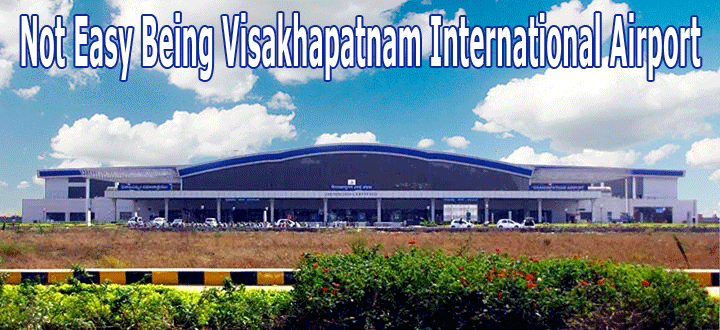
Visakhapatnam International
Airport, (IATA: VTZ – ICAO: VOVZ) located in the port city of the
same name on the eastern coast of India and managed by the government-controlled
Airports Authority of India (AAI), is getting some notice lately.
Better known than, say, Rajahmundry Airport.and
Bhubaneshwar Airport, which are located some hundreds of kilometers nearby,
lately a number of international flights are touching down at the field
while reportedly some freight forwarders and air cargo stakeholders are
getting ready to start operations.
The city has a number of pharma, seafood,
cashew nut, apparel, and jewelry processing and manufacturing centers,
with export potential driving that interest.
Today the airport sees a modest 50-plus
flights—both domestic and international—every day.
But with domestic cargo movement from the
airport underway, it is felt by some here that it is a matter of time
before international cargo operations will start.
According to the airport director’s
office, the process to start the international cargo terminal started
when the airport’s old cargo terminal was refurbished and turned
into an integrated air cargo terminal to handle both domestic and international
cargo.
The airport handled around 1,800 tons of
domestic air cargo in 2013-14, up from the 1,100 tons in 2012-13; the
figure went down in 2014-2015 to 1,240 tons largely because of the effects
of cyclone Hudhud.
A large percentage of the domestic cargo
from the airport flies to Chennai, Bengaluru, or Hyderabad and is made
up of processed seafood. According to a study done some time ago by local
university students, the airport can handle around 10,000 tons of cargo
per year.
Three international carriers—Malindo
Air, Silk Air, and Air Asia—have regular flights connecting the
city with Kuala Lumpur and Singapore.
Air India has proposed a flight to Chicago
from the city.
With the booming pharma and seafood industries
in the city, it is not hard to imagine that there will be a time when
more flights will be needed to cater to the growing volumes of air cargo.
For the moment, most of the cargo that cannot
be accommodated on the few international flights here are being routed
via Chennai or Hyderabad for onward international flights.
Tirthankar Ghosh |





